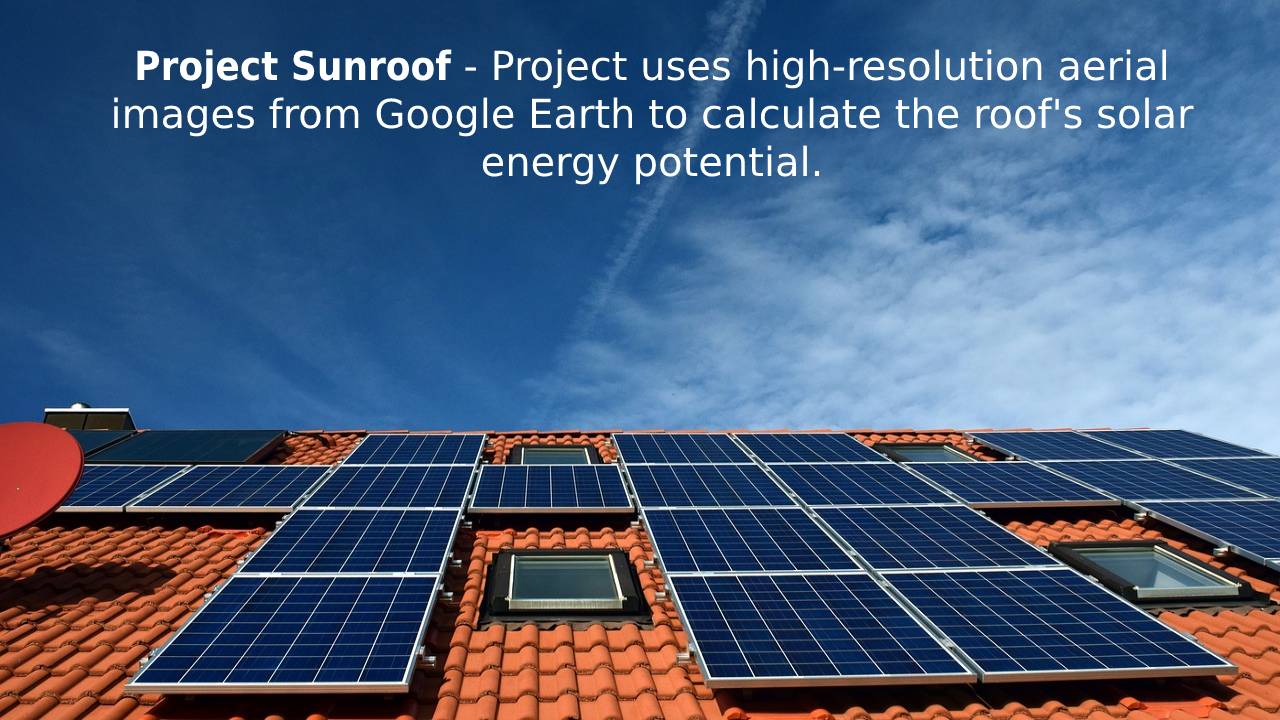Sunroof
The Sunroof is a movable panel that opens to reveal a skylight through which light and fresh air enters the passenger compartment.
Basically, the Sunroof can be operated manually or electrically and is available in many shapes, sizes and designs.
However, the term sunroof is commonly used today to describe any skylight.
The term sunroof has historically been used to describe fixed glass panes rigidly attached to the roof panel above the passenger compartment.
However, the Sunroof has clear and usually tinted glass. Early dates include solar roof, sliding head and sliding roof.
Project Sunroof
- Google unveiled the Sunroof project, which will allow tens of millions of potential solar energy consumers in the US to assess whether their home is solar-powered and how much they can save on electricity.
- Basically, the Sunroof project uses high-resolution aerial images from Google Earth to calculate the roof’s solar energy potential.
- Users have to enter their address. In about a second, the technology analyzes factors such as shade, roof orientation and local weather conditions to calculate how many hours of sunlight will fall on that roof in a typical year.
- However, this information is combined to estimate how much energy a user could save using solar energy.
- For users looking to take the succeeding steps in moving to solar power, Project Sunroof makes it easy by allowing users to connect and share their information with the local providers they choose.
- With the sliding roof project, more solar panels can be installed on roofs, allowing people to save their energy costs and protecting the environment by reducing greenhouse gas emissions.
- By accelerating the growth of solar energy, Sunroof also helps solar installers expand faster, raise more capital, and enable further development.

Key Factors
- The Sunroof Project has demonstrated scalability, expanding from 2 states (and 1.4 million buildings) to 42 states (and 43.4 million buildings) in about eight (8) months.
- There are currently more than 40 solar panel installers in the United States working on the Sunroof project. This number is expected to multiply in the coming months.
How does a project Sunroof work?
- The retractable roof project uses high-resolution aerial photographs from Google Earth to calculate the roof’s solar energy potential.
- However, the sunroof design allows more solar panels to be placed on the roof.
- So, people can save on electricity while protecting the environment by reducing greenhouse gas emissions.
Help the planet
- However, the Sunroof project aims to accelerate the growth of solar energy.
- Expanding the use of solar energy in the electricity mix will help reduce carbon emissions in the electricity sector and reduce the number of greenhouse gases emitted into the Earth’s atmosphere.
Project Sunroof Technology
The data sources Project Sunroof use:
- It uses imagery and 3D modelling, and shade calculations from Google.
- Weather data from the National Renewable Energy Laboratory (NREL).
- It gives utility electricity rates information from Clean Power Research.
- It uses Solar pricing data from NREL’s Open PV Project, California Solar Initiative, and NY-Sun Open NY PV data.
- And also, it uses Solar incentives data from relevant Clean Power Research, Federal, State and local authorities, and relevant utility websites.
- It uses Solar Renewable Energy Credit (SREC) data from Bloomberg New Energy Finance, SRECTrade, and relevant state authorities.
- It uses Aggregated and anonymized solar cost data from Aurora Solar software.
Solar power generation
- Why does this tool give a different estimate of solar power generation than the solar company suggested?
- Or the PVWatts tool from the National Renewable Energy Laboratory (NREL)?
- However, the estimate of solar energy production depends on many factors, such as B. Shading, typical weather in your region and the devices used.
- NREL, your solar panel supplier, Project Sunroof, and others may have different ratings, resulting in different results.
- Additionally, the project’s sunroof map data may be from a different period than other estimates and, therefore, may not reflect recent tree growth or removal.
- However, many solar providers will give you their final estimate of solar production based on the shade values they take when they inspect your roof.
About Project Sunroof
- As the value of installing solar has gotten less expensive, more homeowners turn to it as a possible option for decreasing their energy bill.
- And also, to make installing solar panels easy and understandable for anyone.
- Project Sunroof puts Google’s comprehensive data in mapping and computing resources to use, helping calculate the best solar plan for you.
How does Project Sunroof work?
- When you enter your address, Project Sunroof looks up your home in Google Maps and combines that information with other databases to create your personalized roof analysis.
- Don’t worry; Project Sunroof doesn’t give the address to anybody else.
Customizing for your roof
Project Sunroof computes how much sunlight hits your roof in a year. It takes into account:
- Google’s database of imagery and maps
- 3D modelling of your roof
- Shadows cast by nearby structures and trees
- All possible sun positions over time.
- Historical haze and temperature patterns that might affect Solar Energy production
Choose what you need
Project Sunroof recommends an installation size to generate close to 100% of your electricity use, based on roof size, the amount of sun hitting the roof, and your electricity bill.
However, we recommend an installation that covers less than 100% of your electrical usage.
In most areas, there is a slight financial benefit to producing more power than you can consume.
Computing your savings
Project Sunroof uses current solar industry pricing data to run the numbers on leasing, taking a loan, or buying solar panels for your house to help you choose what’s best for you.
- It also compiles the following incentives to calculate your final cost:
- Federal and state tax credits
- Utility rebates
- Renewable energy credits and net metering
Also Read: Emergency Broadcast System – No trials of the FEMA Integrated Public Alert System in 2020

